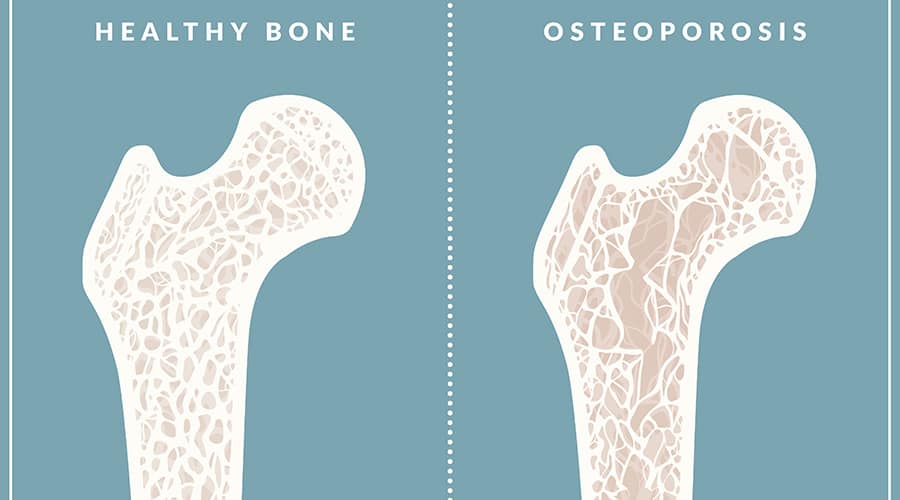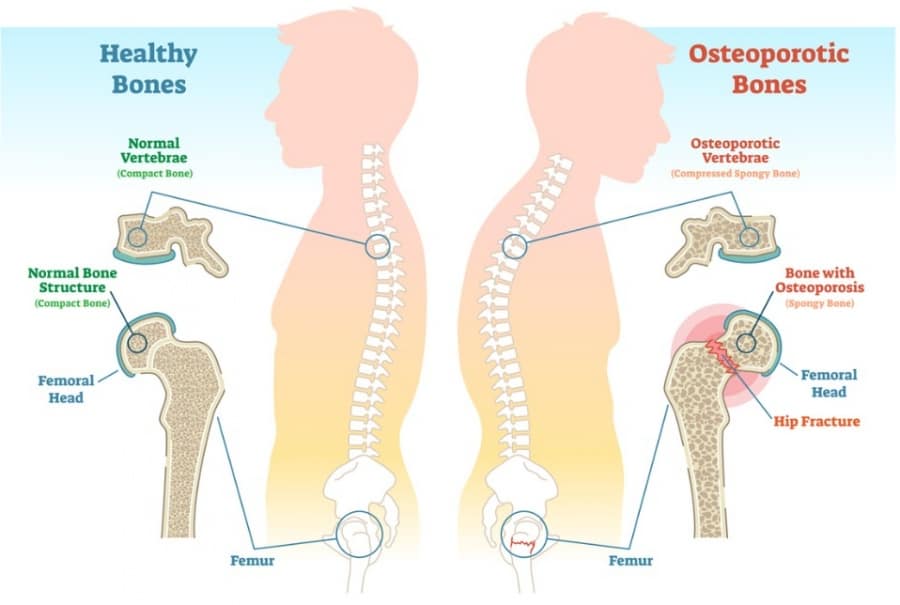Women are more at risk of developing osteoporosis than men, yet there isn’t much awareness about it. Our follower, Dr. Amna Asif is here to change that. Scroll down to read her article to learn about this condition, what the risk factors, how it can be prevented and more:

What Is Osteoporosis?
Osteoporosis is a condition in which the bones become brittle, thin and fragile. This leads to a higher risk of bone fractures, especially post menopause. However, it is a preventable disease if adequate and right measures are taken at a relatively young age. It occurs when bones lose minerals, such as calcium, which ultimately causes the weakening of bones. People with the condition can have a terrible fracture even with a minor fall or trauma.
Women are at a higher risk of developing osteoporosis than men. Women generally have smaller bones than men and also experience a rapid decline in the production of the oestrogen hormone during menopause.
Women in Pakistan are at a greater risk of developing osteoporosis as they do not take enough calcium in their diet, have low vitamin D levels, low level of physical activity, do not have enough sun exposure, and to top it all, have a lack of awareness about osteoporosis and its risk factors.
Fractures of the spine caused by osteoporosis can lead to pain, loss of height and changes in posture later in life. Other common sites for osteoporotic fractures include upper arm, wrist, hip and ribs.
Symptoms Of Osteoporosis
Osteoporosis usually has no signs or symptoms until a fracture happens – that is why osteoporosis is often called the ‘silent disease.’
Diagnosis Of Osteoporosis:
Osteoporosis is diagnosed by a specific test called the bone mineral density scan or DEXA. A DEXA scan is a short, painless scan that measures the density of your bones, usually at the hip and spine and in some cases, the forearm.
Risk Factors
Risk factors include menopause, family history and other medical conditions like thyroid disease, kidney disease, liver disease, gluten intolerance and some medication such as steroids.
Certain lifestyle factors also increase your risk of osteoporosis including a sedentary life style, smoking, less intake of dairy products, less exposure to sunlight, a thin body built or excessive weight.
Prevention Of Osteoporosis
You can decrease your risk of osteoporosis by:
- Having a healthy diet with plenty of fruits, vegetables, whole grains and calcium rich diet
- Vitamin D intake
- Lifestyle changes such as quitting smoking and limiting caffeine intake
- Regular weight bearing exercises and strength-training activities

Diet And Osteoporosis
An adequate intake of calcium is a vital step to build and maintain strong, healthy bones. If there is not enough calcium in the blood, your body will take calcium from your bones. It is recommended that you take 1000mg – 1300mg of calcium in your diet everyday.
Dairy foods like milk, yogurt and cheese have the highest levels of calcium, but there are many other sources of calcium as well such as spinach, sardines and almonds. If you are unable to get adequate calcium from your diet, you may need to talk to a health professional about calcium supplements.
Bone Friendly Exercises For Osteoporosis
Choose weight-bearing activities such as brisk walking, jogging, tennis or dance. While non weight-bearing exercises like cycling and swimming are excellent for other health benefits, they do not promote bone growth.
You can include some high-impact exercise into your routine, such as jumping and rope skipping. But remember to consult a health professional – high-impact exercise may not be suitable if you have joint problems, other medical conditions or are generally unfit.
Activities that promote muscle strength, balance and coordination such as Tai-chi, gentle yoga and Pilates are also important – they can help to prevent falls by improving your balance, muscle strength and posture.
Aim for 30 to 40 minutes of exercise, four to six times a week. Exercise for bone growth needs to be regular, as well as have variety.
What You Need To Do
Implement healthy lifestyle changes and prevention strategies discussed above. If you have any of the risk factors for Osteoporosis, its important that you discuss it with your doctor. If you have developed osteoporosis, your doctor can prescribe you medication for treatment of osteoporosis.








What do you think?
You must be logged in to post a comment.